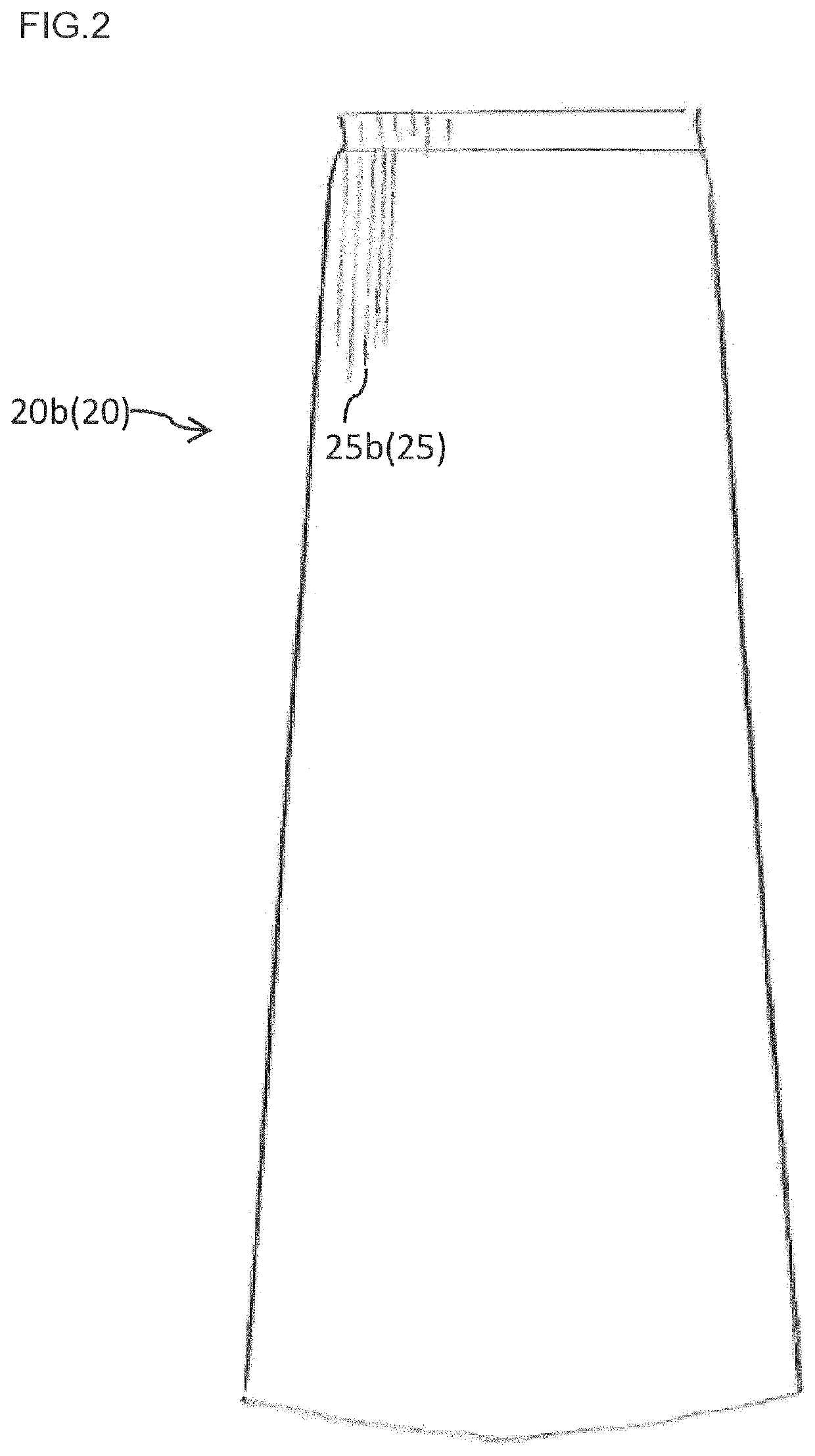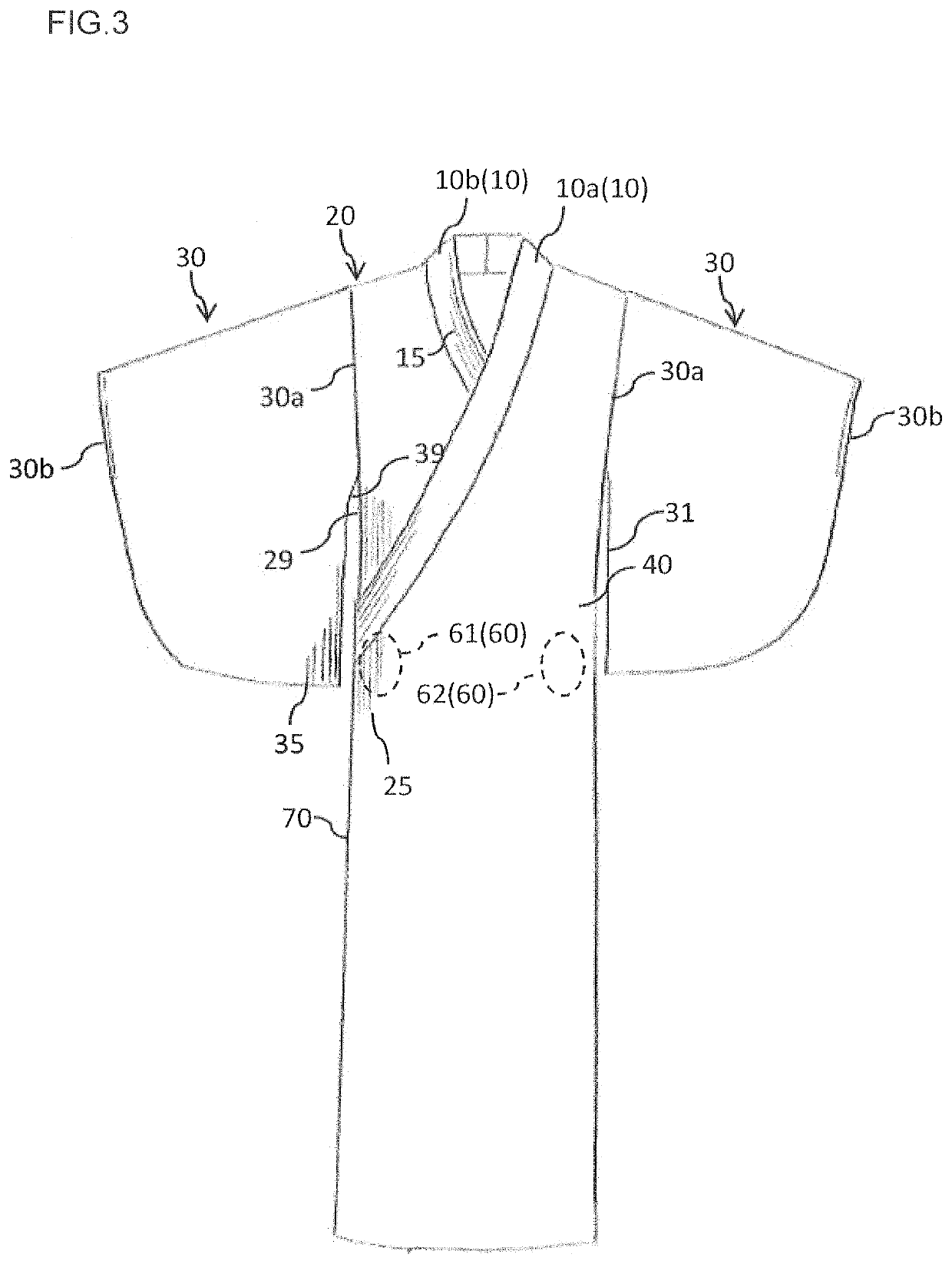Garment
a technology for garments and garments, applied in the field of garments, to achieve the effect of convenient maintenance and easy wearing of garments
- Summary
- Abstract
- Description
- Claims
- Application Information
AI Technical Summary
Benefits of technology
Problems solved by technology
Method used
Image
Examples
Embodiment Construction
[0041]The garment according to the present embodiment may be a two-piece having an upper wear and a lower wear provided below the upper wear as illustrated in FIGS. 1 and 2. However, the garment is not limited to such an aspect, but may be a one-piece as illustrated in FIG. 3.
[0042]As illustrated in FIGS. 1 and 3, the garment of the present embodiment may have a pair of collar parts 10, a main body part 20 having a waistline part 40 positioned below the collar parts 10 (positioned at the waist of a wearer), and two swinging sleeve parts 30 coupled to the main body part 20. As illustrated in FIG. 10, the garment may have an obi part 100 wound around the waistline of the wearer, i.e., the waistline part 40 of the main body part 20 (see also FIG. 13). In the present embodiment, the waistline part 40 indicates a part covered by the obi part 100. As a material of the main body part 20 and the swinging sleeve parts 30, polyester may be used as the main material. Herein, the main material ...
PUM
 Login to view more
Login to view more Abstract
Description
Claims
Application Information
 Login to view more
Login to view more - R&D Engineer
- R&D Manager
- IP Professional
- Industry Leading Data Capabilities
- Powerful AI technology
- Patent DNA Extraction
Browse by: Latest US Patents, China's latest patents, Technical Efficacy Thesaurus, Application Domain, Technology Topic.
© 2024 PatSnap. All rights reserved.Legal|Privacy policy|Modern Slavery Act Transparency Statement|Sitemap



